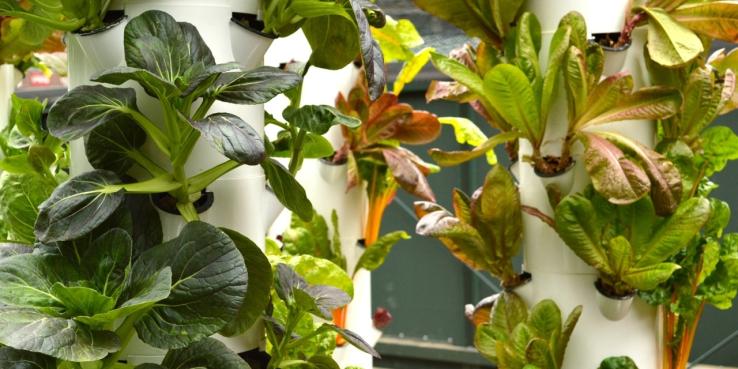In recent years, urban agriculture has been championed as solution to some of cities’ most persistent issues – food insecurity, environmental sustainability, lack of accessible greenspace. SPUR recently explored urban agriculture’s potential to provide economic development and jobs in a forum titled “Can You Make A Living As An Urban Farmer?” The question was addressed by three panelists who run local urban farming businesses and organizations, and their answers varied based upon their distinct business models.
Caitlyn Galloway, co-founder of Little City Gardens, a three-quarter-acre plot in San Francisco's Mission Terrace neighborhood, has had consistent though modest profits since her business’ inception in 2007. She sells produce to local markets and restaurants and fresh flowers to residents. Galloway stressed the role that land tenure plays in the long-term viability and profitability of urban farms. “Urban agriculture is self-sustaining when there is land security and support,” a point she reiterated throughout the forum. When land is secure, infrastructure, such as irrigation systems, can be invested in and planting schedules can be organized months in advance. Galloway has been able to maintain steady business, but she is operating on a temporary lease and the future of the business is indefinite.
Kelly Carlisle, founder and executive director of Acta Non Verba, a nonprofit youth urban-farm project operating out of and benefitting East Oakland, was straightforward about the reality of a career in urban farming: “A commitment to being a farmer is a commitment to living a life in poverty.” Acta Non Verba, which runs a quarter-acre urban farm, challenges local youth to engage with their communities and the natural environment, fostering programs that educate kids as well as empower them to dictate futures beyond their circumstances. The organization sells the produce that it grows and, in a unique model, profits are placed into special savings accounts for the youth participants. The overall funding for the organization comes from separate fundraising, and Carlisle made it clear that the sales of the produce would not be able to provide enough revenue to pay employee expenses. “By the USDA's farmer income standards,” she said, “I am not a farmer. Because all our produce profits go into our youth's individual development accounts, the youth are the farmers.”
Panelist Lara Hermanson of Farmscape, the largest urban farming venture in California, differentiated her challenges from Galloway and Carlisle. She is in the business of designing, installing and maintaining urban farms. As an edible landscaper, she is selling services, not food. Her revenue is more consistent, independent of weather patterns or space limitations. Having installed over 600 urban farms, Farmscape has been able to employ 25 people full-time.
With installation costs of $20,000 to $80,000, Hermanson finds herself regularly emphasizing to clients that the “return on investment” for their projects can’t be quantified by the amount of produce a single garden plot produces. “Does the return include the amount of produce harvested? Or how often you use the green space we created?” In contrast, for Galloway and Carlisle, their return on investment, and their standard of living, is in many ways contingent on the amount of produce their plots produce and quantified by what that harvest is sold for.
While urban farming has entered the conversational vocabulary of engaged city dwellers, making a secure and comfortable income selling produce alone remains somewhat out of reach. With the costs of running a business, owning land and living in the Bay Area; the unpredictability of a seasonal harvest; and the price people are willing to pay for a head of cabbage, it’s very difficult to make a living selling what you grow.
